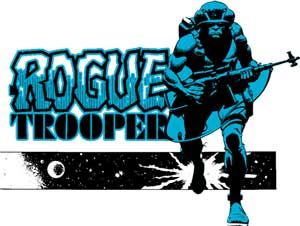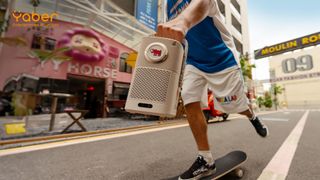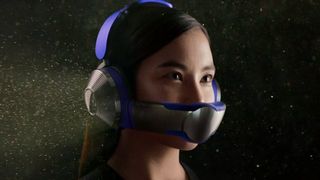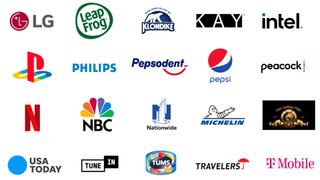How to create the perfect trailer: 10 pro tips
Whether your budget is big or small, moviemaker Craig Spenceley explains how to lure an audience with a killer trailer.
This article is brought to you in association with Masters of CG, a new competition that offers the chance to work with one of 2000AD's most iconic characters. There are big prizes to be won, so enter today!
Film trailers used to be exclusively for punctual cinema-goers. But now they're the main way we learn about the movies (and increasingly, TV shows) we want to see. They can be watched any time, anywhere and on any device. There's no more important tool in the battle to get bottoms in seats or eyeballs fixed to screens.
Creating a great trailer is an art form. It's got to communicate the story, production value and, importantly, the tone of the film all in under three minutes. It's the way all films greet the world.
A perfect trailer has a sense of rhythm which propels the audience through the story of the film and help to build excitement. That perfection is hard to create, but here are 10 tips that should help.
01. Remember the trailer is also a story
A trailer shouldn't just play like a showreel of the film's greatest hits. Just like any edit, a strong narrative is key. Don't get bogged down trying to tell the whole story, but find a strong narrative through line. You're creating an adaptation, an abridged version of the same story so find the core theme and build around it.
It's a three act structure just like the majority of storytelling. Start by setting up the characters and situation, push into the second act after the inciting incident and show the struggle the characters will go through before ending in a climactic third act where you hint at the resolution (but don't show it all!).
Example: The Man of Steel trailer tells a mythic story in three acts.
Get the Creative Bloq Newsletter
Daily design news, reviews, how-tos and more, as picked by the editors.
02. Deconstruct the film
It's important to disconnect from the film and pull it apart so it'll become the building blocks if your trailer. Think about the film being a completed jigsaw. You need to pull it apart and find the pieces to make a new, smaller (but no less complete) picture. It's important to see each visual unconnected to the film so you can repurpose it into your new adaptation of the story.
Example: Captain America: The Winter Soldier trailer puts the pieces back together with a different focus from the film itself.
03. Target your core audience
Make sure everything in your trailer is working to compliment the tone of the film rather than combat it. If you're cutting for a gritty character drama, you probably don't want an edit every 12 frames. If it's a romantic comedy, you probably don't want to score it with dub-step.
Example: 12 Years a Slave trailer knows its academy-voting audience well.
04. Don't spoil (too much)
Obviously any trailer counts as some degree of spoiler, but putting in all the film's third act action will really spoil the film for a lot of people.
It's important to find a balance between communicating the story but not showing everyone exactly what happens so there are no surprises. You don't want to make people feel like they've already seen the whole film.
Example: This trailer for Godzilla gets the balance just right. Offers a peek but doesn’t pull back the curtain.
05. Or be too coy
Too much mystery spoils the magic. You don't want to give too much away but, equally, it's important to give your audience enough so they can get an idea of what the film is about and whether they'd like it.
Example: This trailer reveals too little.
06. Remember your characters
Try and give the main characters a moment that defines them in the trailer. Giving the actors a little time to shine within their performances will give your audience people they can identify with.
Example: This trailer develops its characters well, even the ones who aren’t real.
07. Show don't tell
A lesson from the scriptwriting handbook here, but try not to use a sack full of typography to tell the story - let the dialogue and visuals do the job. It's important to deconstruct the film into two threads; a narrative built with dialogue and a string of arresting visuals.
Example: The Grand Budapest Hotel trailer is great use of film dialogue and visuals to tell the story.
08. The Sound of Music
Music can make or break a trailer. Some trailers of successfully used just one perfect track - examples of this in recent years include 'The Wolf of Wall Street' and 'The Social Network'. Other trailers use two or three different tracks to help changes in tone or emotion.
Example: This Wolf of Wall Street promo is great combination of track and trailer.
09. Effects
Sound design, and the interplay between sound design and music, has become increasingly more important in the construction of a great trailer. It's important that the sound effects you use compliment the music and land with its beats where possible.
Example: In the Prometheus trailer, fantastic sound design adds impact to the drama particularly toward the climax.
A door crash, a sub-sonic boom. Sound effects can also help sell edits, particularly transitions between the acts within your trailer.
10. Watch as many trailers as you can
The best way to learn how to create a great trailer is to watch plenty of them. Spend time browsing Apple Trailers, Vimeo and YouTube and analysing the building blocks of trailers that you love to find inspiration.
Words: Craig Spenceley
Craig Spenceley is a freelance Shooting PD/director and producer who has worked for almost ten years creating corporates, branded content, documentaries, music promos and TV commercials.
Win a trip to SIGGRAPH!

Masters of CG is an exciting new competition for EU residents that offers you the one-in-a-lifetime chance to work with one of 2000AD's most iconic characters: Rogue Trooper.
We invite you to form a team (of up to four participants) and tackle as many of our four categories as you wish - Title Sequence, Main Shots, Film Poster or Idents. For full details of how to enter and to get your Competition Information Pack, head to the Masters of CG website now.
Enter the competition today!

Thank you for reading 5 articles this month* Join now for unlimited access
Enjoy your first month for just £1 / $1 / €1
*Read 5 free articles per month without a subscription

Join now for unlimited access
Try first month for just £1 / $1 / €1
The Creative Bloq team is made up of a group of design fans, and has changed and evolved since Creative Bloq began back in 2012. The current website team consists of eight full-time members of staff: Editor Georgia Coggan, Deputy Editor Rosie Hilder, Ecommerce Editor Beren Neale, Senior News Editor Daniel Piper, Editor, Digital Art and 3D Ian Dean, Tech Reviews Editor Erlingur Einarsson and Ecommerce Writer Beth Nicholls and Staff Writer Natalie Fear, as well as a roster of freelancers from around the world. The 3D World and ImagineFX magazine teams also pitch in, ensuring that content from 3D World and ImagineFX is represented on Creative Bloq.




